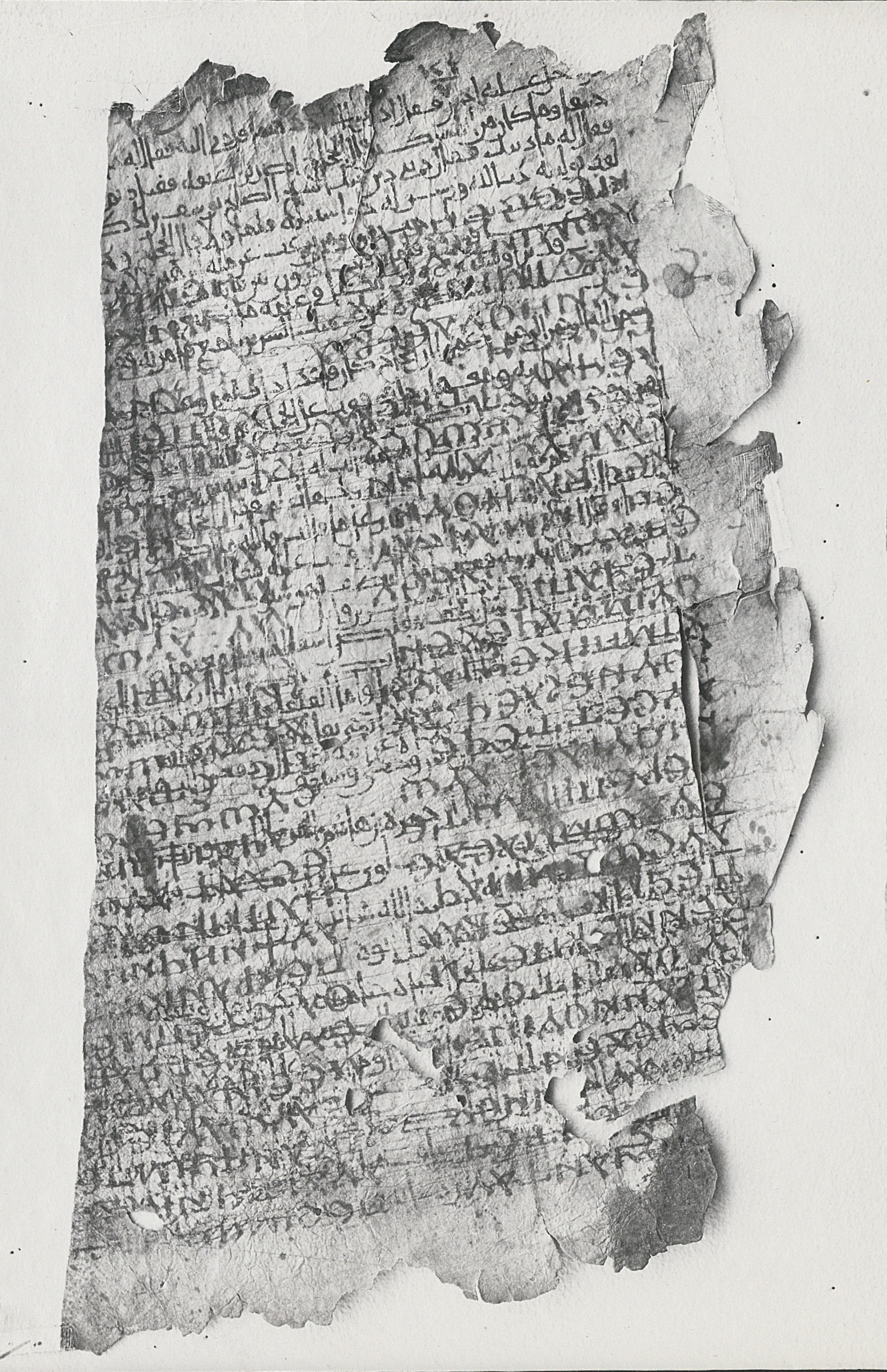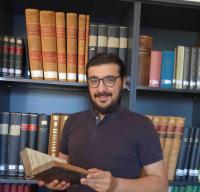A few days ago, the Guardian featured an article about a Qur'an palimpsest whose underlying writing apparently contains portions of the Bible in Coptic. In the meantime, the manuscript was sold by Christie's auction house for GBP 596,750. According to the Guardian article,
"French scholar Dr Eléonore Cellard was looking for images of a palimpsest page sold a decade earlier by Christie’s when she came across the auction house’s latest catalogue, which included fragments from a manuscript of the Qur’an which Christie’s had dated to the eighth century AD, or the second century of Islam. Scrutinising the image, she noticed that, appearing faintly behind the Arabic script, were Coptic letters. She contacted Christie’s, and they managed to identify the Coptic text as coming from the Old Testament’s Book of Deuteronomy – part of the Torah and the Christian Old Testament."
I contacted Eléonore and she told me that, in fact, the Coptic text has tentatively been identified by two French Coptologists. Furthermore, it seems that UV photos of the palimpsest have been taken and they hope to identify soon more of the underlying Coptic text. I add here a few observations concerning the manuscript in question:
1) As our French colleagues adroitly remarked, it seems indeed likely that the Coptic "scriptio inferior" features some passages of Deuteronomy. However, members of our team have been able to decipher also portions of Isaiah in Sahidic. For example, Isaiah 40:26 can be more or less easily deciphered on one fragment. Therefore, it is still not entirely clear to me at this point whether the Coptic manuscript reused in order to accommodate the Qur'an is biblical or, rather, it contains an unidentified literary work that quotes from the Bible. The possibility that the palimpsest reuses more than one Sahidic biblical manuscript should not be excluded either.
2) According to Christie's specialist, Romain Pingannaud, the manuscript, "[i]t’s fascinating, particularly because it’s the only example where you have an Arabic text on top of a non-Arabic text." However, while it is true that such artefacts are rare, this is not the only Coptic manuscript effaced in order to accommodate an Islamic text. I attach here the photograph of a similar pal impsest, whose more recent Arabic text is Islamic, mentioning ʿAmr ibn al-ʿĀṣ – the commander of the Muslim army that conquered Egypt in 641 CE – and ʿAbdallāh ibn al-Zubayr. I lack competency in Islamic literature, but an American colleague helped me to identify the content: the text probably belongs to the Muslim historian al-Mada'ini (d. 839 CE). The story relates to the Umayyad governor al-Ḥajjāj ibn Yūsuf, who interrogates a Khārijite rebel. Notably, the underneath writing features Matthew 27:29-46 in the Fayyumic dialect of Coptic. This fragment was found, together with other Jewish, Christian, and Muslim manuscripts, at the beginning of the 20th century in the Treasury Dome of the Great Umayyad Mosque in Damascus.
impsest, whose more recent Arabic text is Islamic, mentioning ʿAmr ibn al-ʿĀṣ – the commander of the Muslim army that conquered Egypt in 641 CE – and ʿAbdallāh ibn al-Zubayr. I lack competency in Islamic literature, but an American colleague helped me to identify the content: the text probably belongs to the Muslim historian al-Mada'ini (d. 839 CE). The story relates to the Umayyad governor al-Ḥajjāj ibn Yūsuf, who interrogates a Khārijite rebel. Notably, the underneath writing features Matthew 27:29-46 in the Fayyumic dialect of Coptic. This fragment was found, together with other Jewish, Christian, and Muslim manuscripts, at the beginning of the 20th century in the Treasury Dome of the Great Umayyad Mosque in Damascus.
3) The fact that the palimpsest contains both Christian and Muslim texts does not necessary imply that it documents the cultural interactions between the two communities, as it is mentioned in the Guardian article. It may well be that the Coptic manuscript was discarded and recuperated from a garbage heap by a Muslim scribe. We have similar examples of Hebrew/Coptic palimpsest manuscripts found in the Cairo Genizah. While I believe that there have been mutual influences among Muslims and Christians, I think bilingual palimpsests in general do not necessarily prove direct cultural interactions between two communities. Since the provenance of the manuscript cannot be traced, we should refrain from speculating about the use of the two texts.
This leads me to my last point: I am disappointed to see how little is said about the provenance of the manuscript. According to my sources, there is no provenance paper aside from an affidavit from the owner, who apparently bought it in London decades ago. Finally, I want to express my hope that the palimpsest has been purchased by a museum or other professional institution and it has not ended up in private hands. Unfortunately, the fuss around it definitely increased its price and probably made it unapproachable for most institutions.
(This blog is based on a Facebook post I made a few days ago.)
 Blogs
Blogs  Legutóbbi bloggerek
Legutóbbi bloggerek 




